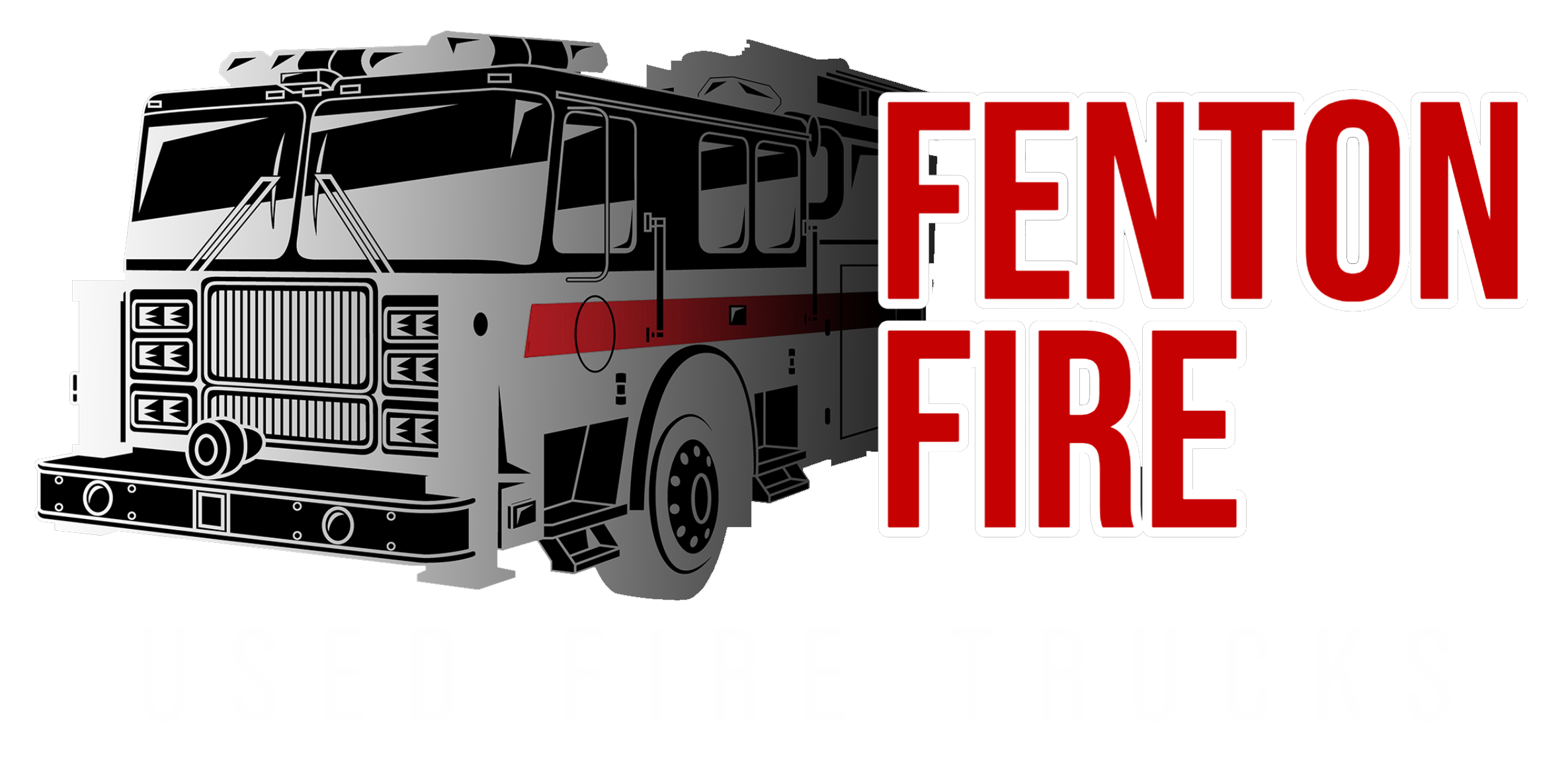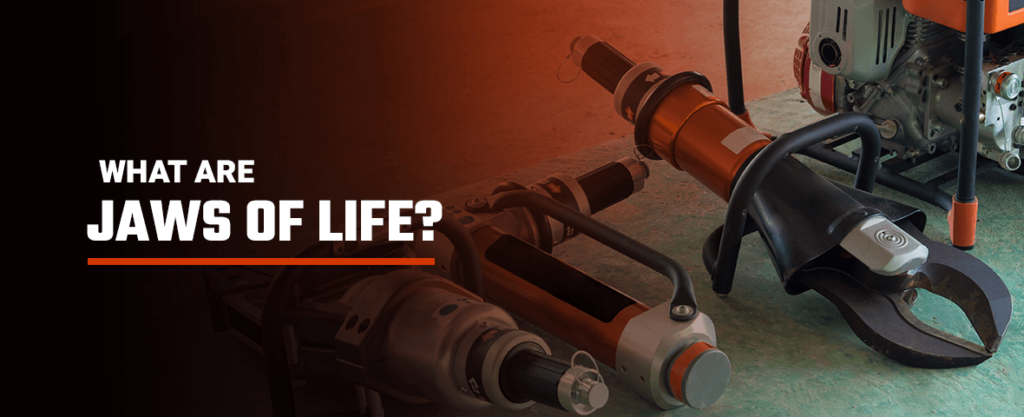
The term “Jaws of Life” refers to a valuable rescue tool used to help rescue individuals trapped in their vehicle after a dangerous accident. The Jaws of Life is not just one thing but a compilation of several items grouped into one.
Picture this. You’re driving down the highway, enjoying the scenery and music, when, suddenly, a drunk driver swerves into you. Your vehicle crashes off the side of the highway, and as you swerve to regain control, you inevitably flip your vehicle. When your car comes to a stop, you’re upside down with a broken leg, pinned against the dashboard.
Once rescue workers arrive at the scene, they will use an assortment of hydraulic tools referred to collectively as the Jaws of Life to cut away the framework of the car and lift it high enough for them to get you out. The rescue workers will use a combination of a cutter, spreader and ram to help them pry open the vehicles in the accident. All together, these three tools make up the Jaws of Life.
A Brief History of the Jaws of Life
The Jaws of Life are a fairly recent invention that has helped save countless people trapped inside their vehicles. While people continue to improve the original Jaws of Life design and make them work with newer vehicles and offer more functionality, the invention of the Jaws of Life has continued to be the most helpful rescue tool in vehicle extractions.
In 1961, a physicist and educator George Hurst witnessed a grotesque scene one afternoon while he was at a stock race. One of the stock racers had flipped their vehicle, and Hurst watched as rescue workers attempted to remove the trapped driver from the wreckage. He was shocked and appalled by how long the process took and how dangerous the current methods were.
Before the Jaws of Life, many rescue workers relied on large circular saws to remove portions of the vehicle to allow for rescue. However, saw blades against a metal framework were not always the safest or least stressful method of extraction. When the saw touches the metal, it makes a loud grinding sound that can further panic the already frantic driver. Rescue workers had to worry about the saws creating sparks that could ignite a fire or cause an explosion.
As Hurst sat there and watched the rescue workers use the circular saw to help remove the driver, he recognized the dangers of the process, especially considering the amount of time the operation took. Most extractions could take anywhere around an hour or more.
Hurst was inspired to invent the Jaws of Life as a means to remove the trapped driver more efficiently and safely. Relying on hydraulics, the Jaws of Life could easily tear open the framework of a vehicle in less than minutes. As a result, his invention grew in popularity and many rescue workers began using them in their extraction process.
When most people witnessed the Jaws of Life in action, they would refer to the drivers as being snatched away by the “jaws of death.” Hurst took the idiom and used it as an inspiration for the name of his invention.
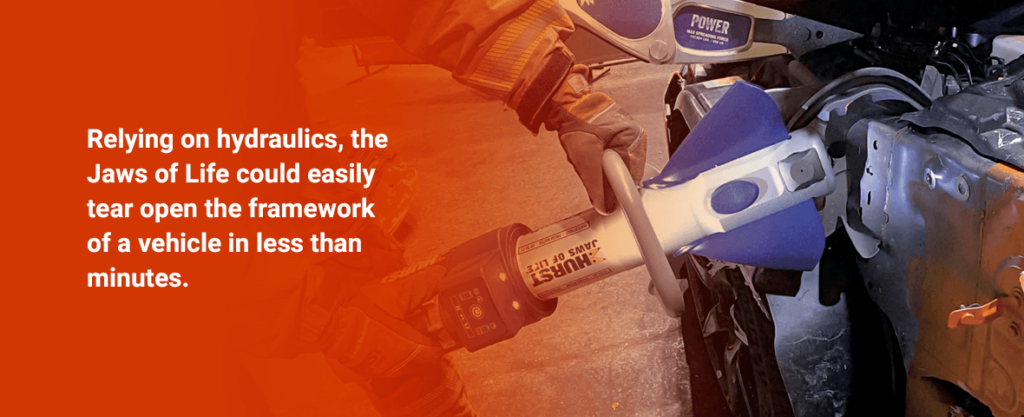
How Do Jaws of Life Function?
The Jaws of Life function much differently than the old method of vehicle extraction. Before the invention of the Jaws of Life, rescue workers used saw blades. These blades would spin rapidly and cut through the framework of the vehicle. This process takes too long and is extremely dangerous.
Jaws of Life rely on the power and pressure of hydraulics to achieve faster and safer results. Hydraulic-powered tools rely on the pressure caused by an incompressible fluid trying to be compressed. Hydraulics work by having a piston push down against the incompressible fluid, such as oil and phosphate esters. The force placed on the oil by the piston transfers to another piston, forcing it up. The oil trapped between the two pistons creates immense pressure that gives hydraulic machinery its strength.
The most common liquid that people use for hydraulics was oil. While oil works in certain situations, the Jaws of Life could not rely on it as an effective hydraulic liquid. Oil is too flammable and can lead to dangerous complications when used for vehicle extractions.
Rather than oil, Hurst used a liquid called phosphate ester fluid. This liquid has a much higher fire resistance due to its high ignition temperatures. The fluid can reach higher temperatures before it combusts.
Additionally, phosphate ester fluid does not conduct electricity, which helps to prevent combustion. As the pressure inside the pistons increases, the friction inside also increases. Friction causes static electricity and can cause a reaction with oil and other flammable liquids. Since phosphate ester fluid does not conduct electricity, the friction buildup will not create a reaction.
Different Types of Jaws of Life
Jaws of Life come in four different styles. Three of them function as separate tools while the last works as a combination of the three. Regardless of which tool you have, they are all crucial to the safe removal of trapped victims. The four types are spreaders, cutters, rams and combination.
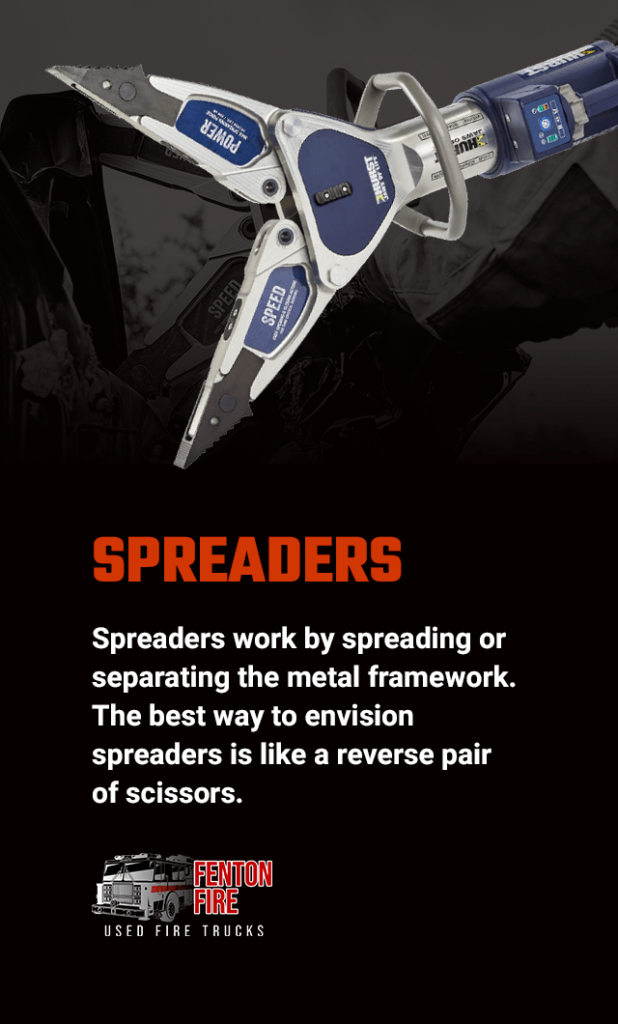
1. Spreaders
Spreaders work by spreading or separating the metal framework. The best way to envision spreaders is like a reverse pair of scissors. The spreader has a pair of pincers, similar to an ant, that open and close as needed. Rescue workers will primarily use them on compressed car frames and other damaged or collapsed structures, which helps give them new openings to better remove trapped victims.
While in the closed position, the rescue worker inserts the tip of the spreader into an available opening and uses the hydraulics to extend the pincers outward. The force and pressure from the spreader push against the damaged frame and spread it open further. Once the machine has finished, a much larger opening remains in its place.
2. Cutters
Cutters work in the opposite direction as spreaders. Rather than forcing an opening, cutters use their pincers to apply immense pressure inward to cut the material away. The pincers close around the metal and pinch it until the metal snaps. After cutting one section, the process continues around the piece needing removal.
Compared with the other types of Jaws of Life, cutters are the direct replacement for old-fashioned circular saws. Cutters slice through metal and other materials within minutes and do so without the risk of sparks and other dangers to the victim.
3. Rams
When spreading and cutting are not viable options, or if you can’t reach the area effectively, rams help to expose inaccessible areas. While spreaders and cutters function similarly to their namesake, rams function slightly differently. Rather than ramming into the vehicle, the ram with the Jaws of Life applies direct pressure against a specific area and forces it outwards. It functions similarly to a jack, but the ram applies the pressure to designated sections instead of lifting upward.
Rescue workers use rams to dislodge parts of a wreckage that the spreader and cutter cannot reach. If an accident causes the driver to become trapped underneath the dashboard or steering column, the rescue worker will adjust the ram underneath the dashboard, and metal alloy rood will push abasing the dashboard, forcing it upwards and creating a larger opening for safe removal.
4. Combination
Combination Jaws of Life take the above equipment and combines them into one portable tool. Rescue workers will not have to carry around multiple devices with them to the wreckage site. They only have to worry about one tool during the entire process.
Using a combination of Jaws of Life as opposed to the individual tools can mean the difference between life and death. Rescue workers will not have to waste time finding the appropriate tool and attaching it to the designated power supply. Combination Jaws of Life can help to extract a victim seconds faster. In a life or death situation, the faster you can rescue the victim, the better.
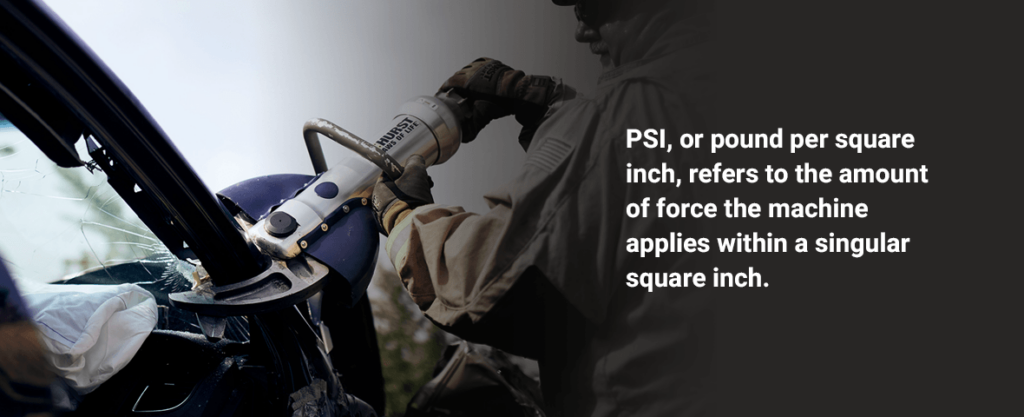
Jaws of Life Specifications
When you are buying a Jaws of Life, you will have to take into account the stats or specifications of the machinery. You will want to look at several specifications to determine which is best for the job ahead of you. In general, you should take into considering the weight, force, PSI and power supply of the tool.
1. Weight
The heavier the Jaws of Life, the harder it is to lift and move around. You should consider opting for more lightweight Jaws of Life if you find yourself needing to do a lot of lifting and holding for cuts and spreads. However, keep in mind that the lighter the machine, the less pressure it can create.
2. Force
Depending on the material you will be cutting through, you will want to know the maximum force the Jaws of Life can reach. The higher the force, the more likely it is to spread, cut and ram without too many difficulties. You will want to consider the amount of poundage or kiloNewtons the machine can reach.
3. PSI
PSI, or pound per square inch, refers to the amount of force the machine applies within a singular square inch. Theoretically, as the amount of force increases so does the amount of PSI. This information is especially important with the ram, as it has a set area. You will want to know how much PSI that small area can reach.
4. Power Supply
Jaws of Life come in several different power supply options, and you will want one that best accommodates the situations you typically find yourself in. In most cases, you can find Jaws of Life that rely on a closed hydraulic system, such as the original Jaws of Life that relied on phosphate ester fluid, a pneumatic system that relies on pressurized air or an electric system that relies on a separate power generator.
Pros and Cons of Jaws of Life Types
When selecting which Jaws of Life is best for you, you will have to consider the above specifications in determining the best fit. However, you should also be aware of some of the common pros and cons. While the obvious pros and cons of an increased force, PSI and weight are fairly straightforward, the real differences come in the type of power supply you choose.
1. Closed Hydraulic Systems
With this type of system, you can appreciate the following pros:
- It has the most power to tackle larger incidents that involve heavy metal construction.
- Close hydraulic systems offer the most powerful tools available.
- It is still an effective means of extraction after 55 years.
Closed hydraulic systems have the following negative attributes:
- It is the heaviest tools of all the systems.
- These systems rely solely on caustic hydraulic fluids (phosphate ester fluid) to operate.
2. Pneumatic Systems
With a pneumatic system, you receive the following benefits:
- It is the most lightweight option.
- It’s easier to transport.
- This system produces the least amount of noise pollution.
- It offers a wide variety of appliances.
- Pneumatic systems use pressurized air rather than fluid or electricity.
Pneumatic systems also have the following cons:
- They are limited to air availability.
- These systems have less force and PSI.
3. Electrical Systems
Electrical systems provide the following advantages:
- It is lightweight and is easy to transport.
- This system offers a wide variety of appliances.
- Technological advancements increase the battery life substantially.
This type of system also come with the following cons:
- They must have an available electrical supply.
- There are some restrictions when it comes to heavier metal construction.
How to Purchase Jaws of Life Equipment
When you decide to purchase a set of Jaws of Life, you’ll have to make two decisions. You must decide whether or not you want to buy each tool individually or in a combination Jaws of Life. You’ll also have to determine whether you want a new or used set.
Combination Jaws of Life offer the most convenience at an affordable price. You’ll only have to bring one tool with you rather than three separate ones. You will be able to transition seamlessly between each type as needed. However, if you are in a situation that requires different extractions happening at once, one combination Jaws of Life would not be the most ideal.
While it might be tempting to purchase a brand new set of Jaws of Life, you might want to consider opting for used ones instead. You can save money purchasing used, and you won’t have to worry about having an outdated tool.
The original Jaws of Life have continued to be an effective extraction tool for half a century without the need for any major changes. You don’t need to spend tens of thousands of dollars for just one tool when you can have an effective and reliable tool for half the price.
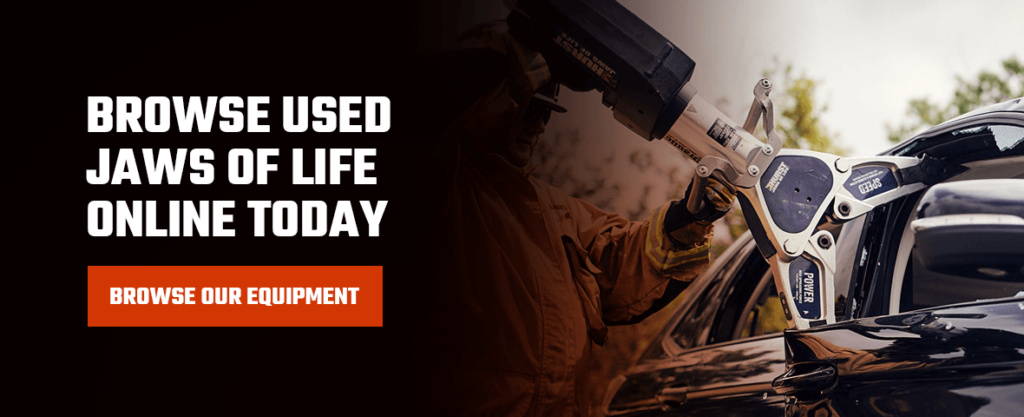
Browse Used Jaws of Life Online Today
Since its initial creation, the Jaws of Life has saved countless people. These three powerful tools changed how rescue workers can safely remove drivers from the confines of a crushed vehicle. These tools are a must-have for all rescue workers and fire departments.
At Fenton Fire Equipment, you don’t have to stress about affording these lifesaving tools. For half the price of a new cutter, you can just as easily purchase a high-quality, reliable used cutter and spreader. Browse our selection of used Jaws of Life and save a life today. We also offer a wide range of used fire truck listings.
